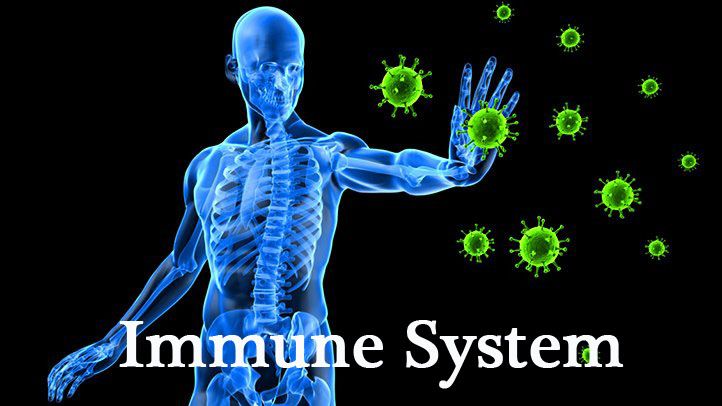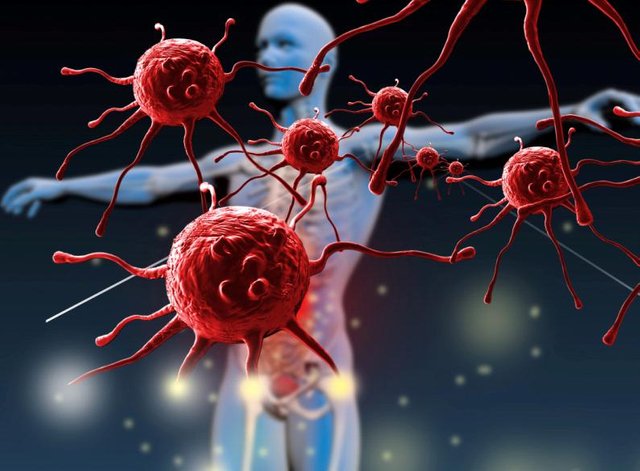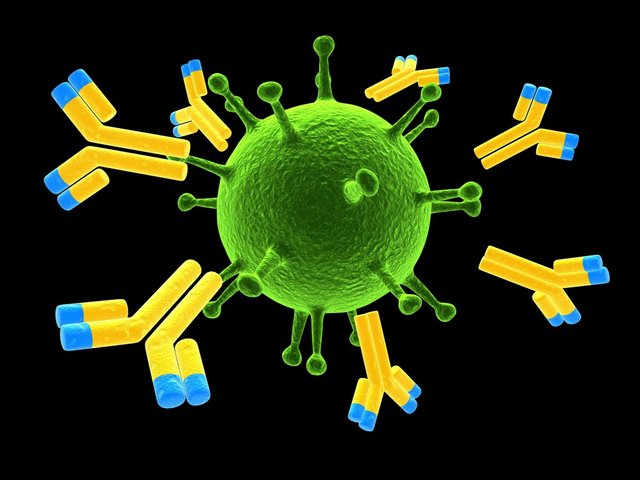Immunity | The Body’s Special Forces of Defense

The Immune System is the Defensive unit of the body
The body defense action is similar to human mode of territorial defense, as they exhibit protective agents or soldiers against foreign invaders. Imagine a scenario (war setting) where a fortified territory is being pressed by invading enemies but being rebuked by the territorial defensive force or soldiers; or a scenario in chess where the king is being put to check by an enemy piece, but was defended it by capturing the piece to avoid a checkmate. The human body has a similar mode of defense; it has an organized committed defense system that fight against foreign or invading microbes and infections.
Every living organism constantly has to be on guard against foreign and dangerous agents. In order not to be gobbled up by these agents, it constitutes a potential source of valuable defensive organic molecules. Over the course of evolution, simple multicellular organisms developed a defense system activated by sensing typical molecular patterns associated with pathogens or distressed cells. This system is conserved and led to the development of highly sophisticated defense systems in most multicellular organisms and also works in humans.
IMMUNITY
Immunity is defined as the capacity of the body to resist pathogenic agents. It is the ability of body to resist the entry of different types of foreign bodies like bacteria, virus, toxic substances, etc. Immune system evolved as the host’s defense against infectious agents, and it is well known that patients with deficiencies in the immune system are automatically subjected to these infectious diseases. However, as we shall see, it may also play a larger role in the elimination of other foreign substances, including tumor antigens or cells and antibodies that attack the body. Immunity is of two types:
I. Innate immunity.
II. Acquired immunity.
DEVELOPMENT AND PROCESSING OF LYMPHOCYTES
In fetus, lymphocytes develop from the bone marrow. All lymphocytes are released in the circulation and are differentiated into two categories. The two categories are;
- T lymphocytes or T cells, which are responsible for the development of cellular immunity
- B lymphocytes or B cells, which are responsible for humoral immunity.
T lymphocytes;
T lymphocytes are processed in thymus. The processing occurs mostly during the period between just before birth and few months after birth. Thymus secretes a hormone called thymosin, which plays an important role in immunity. It accelerates the proliferation and activation of lymphocytes in thymus. It also increases the activity of lymphocytes in lymphoid tissues.
Types of T Lymphocytes
During the processing, T lymphocytes are transformed into four types:
- Helper T cells or inducer T cells: These cells are also called CD4 cells because of the presence of molecules called CD4 on their surface.
- Cytotoxic T cells or killer T cells: These cells are also called CD8 cells because of the presence of molecules called CD8 on their surface.
- Suppressor T cells
- Memory T cells
Storage of T Lymphocytes
After the transformation, all the types of T lymphocytes leave the thymus and are stored in lymphoid tissues of lymph nodes, spleen, bone marrow and GI tract.
B lymphocytes;
B lymphocytes were first discovered in the bursa of Fabricius in birds, hence the name B lymphocytes. Bursa of Fabricius is a lymphoid organ situated near the cloaca of birds. Bursa is absent in ammals and the processing of B lymphocytes takes place in liver (during fetal life) and bone marrow (after birth).
Types of B Lymphocytes
After processing, the B lymphocytes are transformed into two types:
- Plasma cells.
- Memory cells.
Storage of B Lymphocytes
After transformation, the B lymphocytes are stored in the lymphoid tissues of lymph nodes, spleen, bone marrow
and the GI tract.
Mode of Action
Cell-mediated immunity is defined as the immunity developed by cell-mediated response. It is also called cellular immunity or T cell immunity. It involves several types of cells such as T lymphocytes, macrophages and natural killer cells and hence the name cell mediated immunity. Cell-mediated immunity does not involve antibodies.
Antigen-presenting cells are the special type of cells in the body, which induce the release of antigenic materials from invading organisms and later present these materials to the helper T cells. Antigen-presenting cells are of three types: Macrophages, Dendritic cells and B lymphocytes. Among these cells, macrophages are the major antigen-presenting cells.
Humoral immunity is defined as the immunity mediated by antibodies, which are secreted by B lymphocytes. B lymphocytes secrete the antibodies into the blood and lymph. The blood and lymph are the body fluids (humours or humors in Latin). Since the B lymphocytes provide immunity through humors, this type of immunity is called humoral immunity or B cell immunity. Antibodies are the gamma globulins produced by B lymphocytes. These antibodies fight against the invading organisms. The humoral immunity is the major defense mechanism against the bacterial infection.
Antigen-Antibody Binding System
The region of an antigen that interacts with an antibody is called an Epitope or an immunodeterminant region. The binding of an antibody to the antigen is dependent on reversible, noncovalent interactions, and the complex is in equilibrium with the free components. The binding pocket of an antibody can accommodate from 6 to 10 amino acids. Small changes in the antigen structure (such as a single amino acid) can affect the strength of the antibody-antigen interaction.
Affinity is the measure of the strength of the antibody-antigen binding and it is usually expressed in terms of the concentration of an antibody-antigen complex measured at equilibrium. It typically ranges from micro (10-6) to pico (10-12) molar. High-affinity antibodies can bind more antigen in a shorter period of time than low-affinity ones, and they form more stable complexes. Hence, high-affinity antibodies are usually preferred in immunochemical techniques.
Avidity is another parameter used to characterize the antibody- antigen binding reaction. It is the measure of overall stability of the complex, determined by the antibody’s affinity for the epitope, the number of binding sites per antibody molecule and the geometric arrangement of the interacting components. Avidity describes all factors involved in the binding reaction, and it determines the success of all immunochemical techniques.
Antibodies are usually highly specific for the antigen. However, some antibodies show cross-reactivities to similar epitopes on other molecules.
Natural killer (NK) cell is a large granular cell that plays an important role in defense mechanism of the body. It has an indented nucleus. Considered as the third type of lymphocyte, it is often called the non-T, non-B cell. It is derived from bone marrow. NK cell is said to be the first line of defense in specific immunity, particularly against viruses.
NK cell kills the invading organisms or the cells of the body without prior sensitization. It is not a phagocytic cell but its granules contain hydrolytic enzymes such as perforins and granzymes. These hydrolytic enzymes play an important role in the lysis of cells of invading organisms.
CYTOKINES are the hormone-like small proteins acting as intercellular messengers (cell signaling molecules) by binding to specific receptors of target cells. These non-antibody proteins are secreted by WBCs and some other types of cells. Their major function is the activation and regulation of general immune system of the body.
Laboratory Techniques
Immunochemistry is a branch of chemistry that involves the study of the molecular mechanisms underlying the function of the immune system, especially the nature of antibodies, antigens and their interactions. An immunoassay is a biochemical test that measures the presence or concentration of a macromolecule or a small molecule in a solution through the use of an antibody or an antigen.

Immunochemistry offers simple, rapid, robust yet sensitive, and easily automated methods for routine analyses in clinical laboratories. It involves analysis based on highly specific binding between an antigen and an antibody. An epitope (immunodeterminant region) on the antigen surface is recognized by the antibody’s binding site. The type of antibody and its affinity and avidity for the antigen determines assay sensitivity and specificity. Depending on the assay format, immunoassays can be qualitative or quantitative. They can be used for the detection of antibodies or antigens specific for bacterial, viral, and parasitic diseases as well as for the diagnosis of autoimmune diseases. Immunoassays can measure low levels of disease biomarkers and therapeutic or illicit drugs in patient’s blood, serum, plasma, urine, or saliva. Immunostaining is an example of an immunochemical technique, which combined with fluorescent labels and allows direct visualization of target cells and cell structures.
Examples of Immunochemical techniques used in biochemistry for analysis:
Immunoassay:- a biochemical technique that measures the concentration of a substance in a biological liquid;
Immunoelectrophoresis:- a technique used in clinical laboratories to detect the presence or absence of proteins in the serum;
Radioimmunoassay:- a technique for detecting antigen or antibody;
Immunofluorescence:- a technique used for labelling the antibodies;
Immunohistochemistry:- a technique used for localizing the proteins in cells of a tissue section;
Immunoprecipitation:- a technique for detecting a particular antigen in a given cell or tissue type;
Enzyme-Linked Immunosorbent Assay:- a technique used for both determining serum antibody concentrations and detecting the presence of antigen or antibody.
Reference
- https://en.wikipedia.org/wiki/Immune_system
- http://www.biologydiscussion.com/biochemistry/immunochemical-techniques/top-7-types-of-immunochemical-techniques-used-in-biochemistry/12525
- https://www.immunology.org/public-information/what-is-immunology
Thanks for taking your time to read this article, its fascinating having an audience. if you find this helpful and interesting kindly appreciate by UPVOTE and COMMENT.




Very interesting and detailed information! What do you think is the best way to take care of our immune system in order to make sure it is protecting us but at the same time not going overboard and contributing to auto-immune diseases like Hashimotos thyroiditis, psoriasis or rheumatoid arthritis?
The very best way to take care of immunity is to avoid being exposed to germs. The main function of the immune system is to defend the body against invading microbes or pathogens; therefore continuous exposure to this microbes will definitely trigger a strong immune response and this can cause the cells of the immune system to go violent and thereby attacking body tissues (autoimmune diseases). Most autoimmune diseases are associated with leaky gut, meaning the tight junctions that typically hold the gut lining together have become loose, allowing undigested food particles, microbes, toxins, and more to escape the gut and enter the bloodstream. However, maintaining a healthy lifestyle and following a good-health guidelines is the best step you can take toward naturally keeping your immune system strong, healthy and co-ordinated. Every part of your body, including the immune system, functions better when protected from environmental assaults. I wish to write a post on this (auto-immunity) soon. Thank you
Thank you for the reply. I'll be looking forward to your future posts!
I found this article to be very informative. Thank you for your share!
Good job. Wishing you good health. Thank you for sharing this healthy info with us all.
I would be very interested in an article like this on autoimmunity, @okunlolayk. You did a good job writing this article. It has a lot of technical detail, but there is definitely an audience that appreciates that. The only thing I would suggest is that you include more white space in an article that is so text-heavy. It is hard on the reader's eyes to have large blocks of text on a screen.
Cheers!
thank you, i will look into that